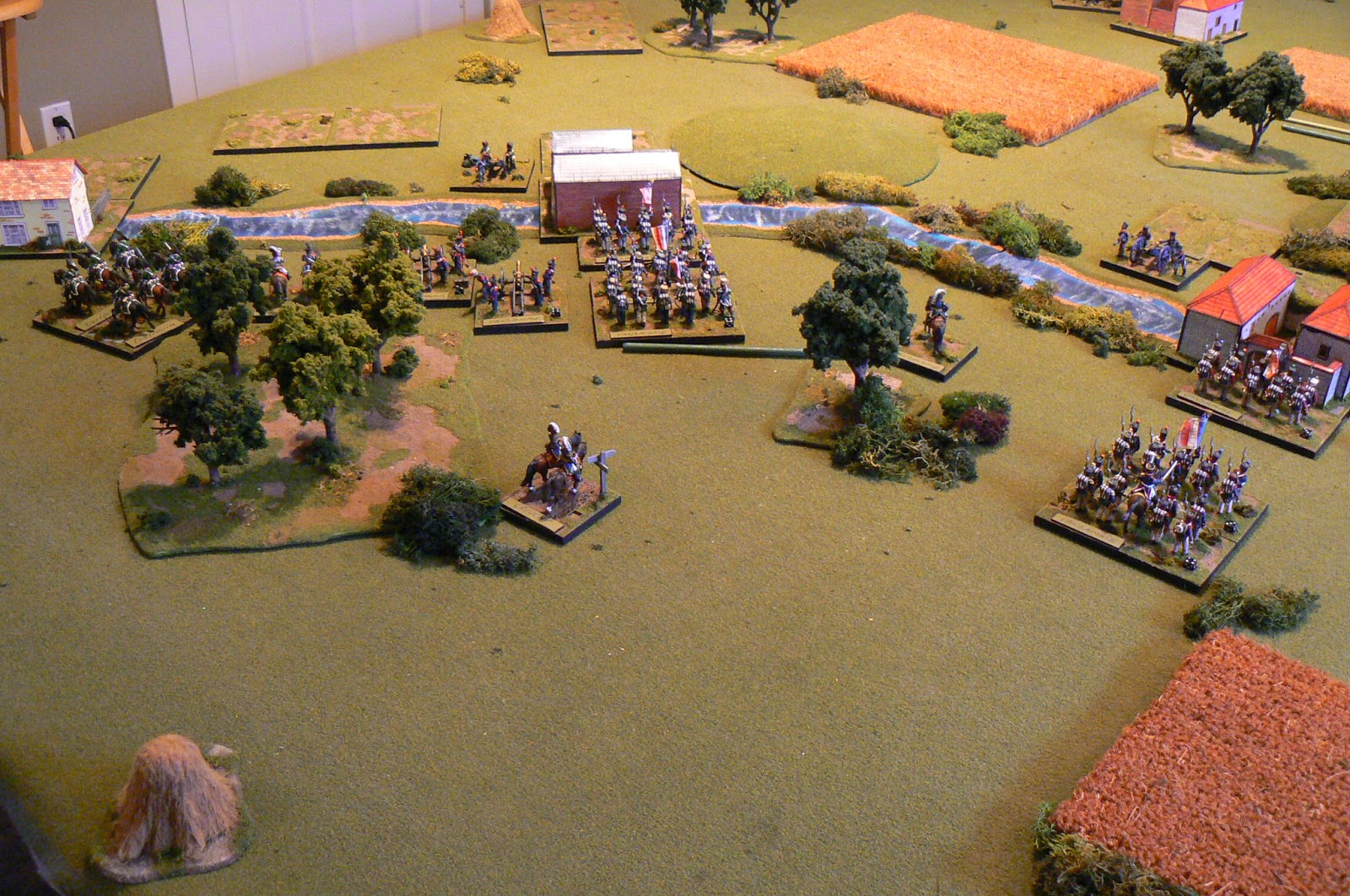Based on a real battle in Russia, this scenario designed by Brandon and played over two nights, had the Russians attacking a strong German defensive position including a town (always 'fun'). The two victory points being the town and the extreme German left flank of the table point.
The following is not really a narrative of the whole battle but merely observation from my point of view.
 |
| Gives a flutter to any Stalinist heart |
Evening One:
The usual "what do you want to command?" allocation of forces with myself taking a Russian all-tank force as I don't often play their favourite "Battlefront" rules and so tried to keep it simple.
I was told to go attack 'over there' to the German left flank and so proceeded to move along the curvy roads gaining road bonus. Now in the far, far distance the German Tiger tank fired and took out the tank
on the crossroads so blocking that for all other use. THAT is the range?! Oh dear.
 |
| My tank conga line. The markers placed on the tanks are suppression and disorder markers. And yes, for you tread heads out there, it is a German truck following. Let's pretend it is Russian as Dave's growing Russian collection doesn't quite have enough Russian trucks yet. (all Russian troops in the battle are his) |
Forced by terrain to limited attack avenues the Russians were forced "up the gut" and so I pushed my strung out tankers into immediate attack against the STuG and PaK 37 in the wood line. Well they HAD been rolling poorly.....
 |
| A STuG and PaK in the woods support by SS infantry and a MkIV and Tiger in the background. Yup, let's charge them! |
 |
| .........with the usual results |
 |
| With Kev's forces reaching the dragon's teeth, our casualties mount. |
Of course at this point Comrade Dave who had initially stated " yeah, yeah, move everything that way. I've got the town", now started to despair about his chances of taking the town faced with determined German resistance ( read: good dice rolls)
 |
| German infantry in the rubble. |
At this point four hours and 6 turns gone by with the battle still in the balance.
Evening Two:
With the expected non-arrival of Sean, and the depletion of my force, I switched sides and took command of the German right flank holding the town. I immediately went on the offensive to help what little infantry were left holding the corner of the town. Ultimately while slowly losing hold on the town [ my first turn saw me roll three successive 9's to beat off a overwhelming infantry assault on my remaining town sector ], my panzers did some good shooting ( again, read: lucky dice ) to hold off any moves from within the town.
 |
| my situation as German commander. The Russian trucks are disgorging lots of infantry as they are blocked by the burning Russian assault guns. I have a couple of infantry stands in the pale house and good armour support. |
 |
| Traffic jam in the town |
 |
| a wider shot including Dave's T-34 in the upper right corner of the town at the precarious angle trying to get himself out of the rumble and failing for several turns his 'bog check' roll with the curses of " FOR THE LOVE OF...!!!!" |
The overall battle was interesting as the Russian fire was so poor (rolling six successive 2's at one point of the game) that the German armour was seldom hit. Brandon commanding the German left stated that his lone PzMkIV sustained 14 shots without harm. On the flip side, the Russian morale rolls were outstanding rolling 9 or 10 every turn! The result was that the battle lasted much long than it have should as the Germans were still alive and the Russians tenuously holding on with meager resources.
After 8 turns and 8 hours of play the battle was declared a draw due to the location of forces at each victory point.
Highlight of the night: Dave tends to be very demonstrative when rolling his dice. Often he rolls the dice for firing with a loud "BANG!!" and with the usual result of a 1 or 2 ...rather than the expected 10. Rather finding this silly, I suggested that he scares the dice with his loud scream and suggested he talk softly to them. Sooo.. the very next roll he smooches them with kisses and soft purring of "I love you" { yes he actually does these things. I lie not. } And so rolls his one and I believe only 10 of the entire game. Does he continue this sedate practice? Heck, no. Actually started using other, than the Soviet
red dice, to make his rolls, to no greater effect. Mind you, the group tends to blame you and you personally for any poor "shooting" i.e. random and unlucky low rolls, than the fates of the dice. They like Armati and THAT is
all dice so I should not expect less. My bad....



















































